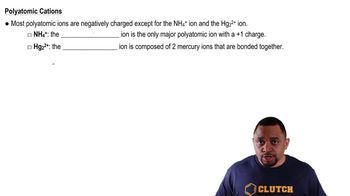How many covalent bonds are formed by each atom in the following molecules? Draw molecules using the electron-dot-symbols and lines to show the covalent bonds.
a. PH3
b. H2Se
c. HCl
d. SiF
 Verified step by step guidance
Verified step by step guidance Verified video answer for a similar problem:
Verified video answer for a similar problem:



 0:37m
0:37mMaster Lewis Dot Structures: Neutral Compounds (Simplified) Concept 1 with a bite sized video explanation from Jules
Start learning